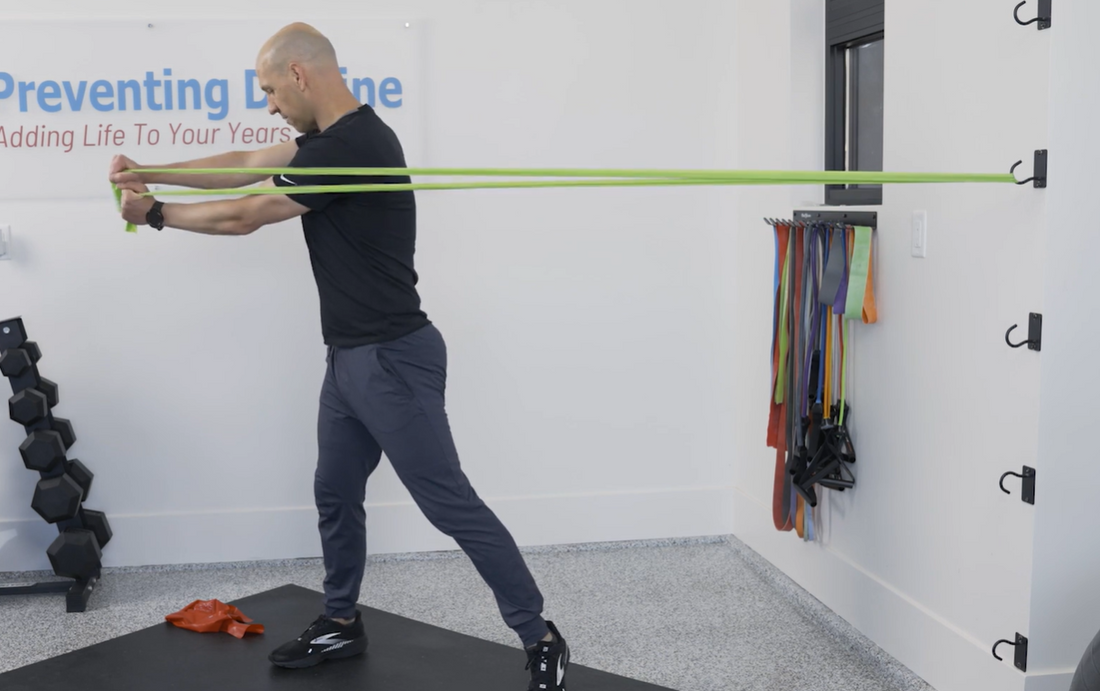
5 Functional Movements to Keep You Independent as You Age
Share
We all know that staying active can boost our energy, strengthen our bones, and improve our mood. But for older adults, it's not just about any movement—it's about the right kind of movement. While any activity is beneficial, certain types of exercise are essential for maintaining your independence and making everyday tasks easier.
According to the Centers for Disease Control and Prevention, 61% of adults aged 65 and older face challenges with basic activities like picking up objects from the floor or reaching for items in the pantry. While these tasks may not feel like formal exercise, they are examples of what are known as functional movements. These are movements we perform daily, and being able to do them is vital for a long, healthy life.
Think of your body like a car. If it’s not used regularly, it can “rust,” leading to joint pain, stiffness, and other issues. To keep your body “rust-free,” there are six key movement patterns to practice: hip hinge, single leg, pushing, pulling, and rotation. These are the foundation of exercises that help keep you moving and independent.
Below are a few functional movements to include in your daily routine. You can try them at home, or we can help you as part of a PD+ Membership. Over time, these movements will help you strengthen your body and feel more confident in your daily activities.
1. Hip Hinge
Squatting is something we do all day—whether it’s sitting down, standing up from a chair, or bending to pick something up.

How to Do It:
- Stand with your feet hip-width apart.
- Tighten your core, keep your chest lifted, and your chin level with the floor.
- Shift your weight into your heels and lower your hips down, as if sitting in a chair.
- Lower until your thighs are nearly parallel to the floor, making sure your knees don’t go beyond your toes.
- Push through your heels to return to standing.
- Repeat for three sets of 10 reps.
Tip: Add exercises like glute bridges or hip hinges to improve hip mobility and help you perform squats more effectively.
2. Single Leg
Every step you take, whether walking or climbing stairs, mimics a lunge, which is essential for balance and strength.

How to Do It:
- Stand with your feet shoulder-width apart.
- Take a step forward with one leg and slowly lower your body until your front thigh is parallel to the floor (your knee should be at a 90-degree angle).
- Keep your front knee behind your toes.
- Press through your heel to return to standing, then repeat on the opposite side.
- Perform three sets of 10 reps.
Tip: Start with a smaller step or a smaller range of motion to make it easier, or use a chair or wall for balance support.
3. Push
Push-ups are great for strengthening the chest and arm muscles, which are important for tasks like lifting groceries or pushing yourself up from a chair.

How to Do It:
- Start in a plank position with your hands slightly wider than shoulder-width.
- Tighten your core and lower your body toward the floor by bending your elbows.
- Try to lower until your chest or chin touches the floor.
- Press through your hands to return to the starting position.
- Complete three sets of 10 reps.
Tip: If traditional push-ups are too challenging, try doing them with your knees on the floor or against a sturdy surface like a couch or wall.
4. Pull
Pulling movements help maintain balance in your muscles. Everyday tasks like pulling open a door or lifting heavy items use these muscles.

How to Do It:
- Secure a resistance band around a sturdy object or step on it with your foot.
- Grab one end of the band, keeping your feet flat and your back straight.
- Pull the band towards you, squeezing your shoulder blade together.
- Slowly release and repeat for three sets of 10 reps.
Tip: To improve shoulder mobility and prevent injury, add "floor angels" to your routine—similar to snow angels but performed on the floor or against a wall.
5. Rotation
This rotational movement, similar to chopping wood, is involved in tasks like reaching for items or even playing sports like golf or tennis.

How to Do It:
- Start in a squat position with feet hip-width apart.
- Twist to the left, lowering your hands outside your left leg.
- Exhale as you twist and lift your arms diagonally across your body, finishing with your arms above your head.
- Perform the movement slowly and with control.
- Complete three sets of 10 reps on both sides.
Tip: To enhance rotation in your upper back, try a quadruped rotation: on your hands and knees, rotate your upper back to raise one elbow towards the ceiling.
Conclusion
By incorporating these simple functional movements into your routine, you can improve your strength, mobility, and overall quality of life. Remember, it's always wise to check with your doctor before starting a new exercise routine, especially if you have any pre-existing health conditions. Stay active, stay independent!
If you’re looking for a customized exercise program that’s tailored to your unique needs, the Functional Fitness Assessment is where you need to start today!
